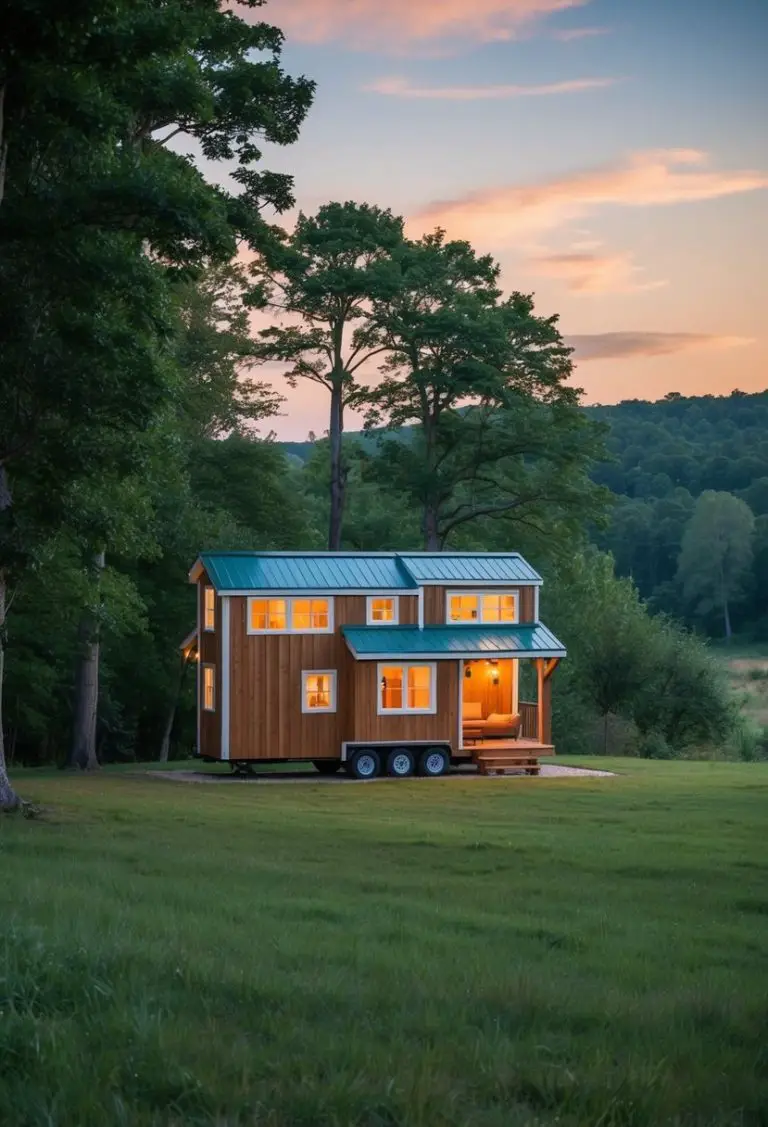Are Tiny Houses Legal in Oklahoma: Understanding the State’s Regulations on Tiny Homes
Tiny houses have become increasingly popular in recent years, as people seek to downsize and simplify their lives. However, before investing in a tiny home, it is important to understand the legal issues surrounding them. In Oklahoma, like in many other states, the legality of tiny houses can be a complex and confusing issue.
The first thing to understand is that there is no one-size-fits-all answer to whether tiny houses are legal in Oklahoma. The rules and regulations surrounding tiny homes vary depending on a number of factors, including where in the state you are located and how you plan to use your tiny house. Additionally, the laws and regulations surrounding tiny homes are constantly evolving, so it is important to stay up-to-date on the latest developments.
Legality and Zoning Regulations in Oklahoma
Statewide Regulations and Building Codes
Oklahoma does not have statewide regulations governing tiny homes. Instead, each county and municipality sets its own rules regarding what is accepted, where to site it, etc. However, tiny homes are sustainable and offer huge cost savings, and Oklahoma is known to be an affordable state.
Regarding building codes, tiny homes on foundations are seen as accessory dwelling units (ADUs) and must meet local zoning laws. On the other hand, tiny houses on wheels are often classified as RVs and require specific parking zones.
Local Zoning Ordinances in Key Cities
In Oklahoma City, a faith-based group reached an agreement to build 50 tiny homes near NW 192nd and Western in 2020. Although there are no specific statewide regulations for tiny homes, local zoning and building codes do apply. The city’s zoning code has minimum square footage requirements for residential zoning, which may pose a challenge for tiny home owners.
In Tulsa, tiny homes are allowed as long as they comply with the International Residential Code (IRC) and the city’s zoning restrictions. The IRC requires that tiny homes have at least one habitable room with a minimum of 120 square feet, among other safety requirements.
Challenges and Considerations for Tiny Home Owners
Tiny home owners in Oklahoma should be aware of the challenges that come with living in a tiny home. These include zoning requirements, parking restrictions, and finding a suitable location. Additionally, tiny home owners must consider the cost of utilities, as well as property taxes, which may vary depending on the location of the tiny home.
Overall, while tiny homes are legal in Oklahoma, prospective tiny home owners should research local zoning ordinances and building codes before investing in a tiny home.
Living in a Tiny House in Oklahoma
Tiny Home Communities and Lifestyle
Oklahoma offers a welcoming environment for tiny home enthusiasts. The state does not have statewide regulations governing tiny homes, which means homeowners have a great deal of freedom when it comes to the lifestyle they choose to lead. However, local zoning ordinances apply in many areas of the state. As such, it is important to research the area where you plan to live and ensure that your tiny home complies with all local regulations.
For those who want to live in a tiny home community, Heartwood Commons is an intentional community of 36 individually owned, energy-efficient, tiny houses near Tulsa, Oklahoma. The community has many common amenities, including a community garden, shared kitchen, and community events. Small-house communities provide residents with shared resources and amenities, which enhances the enjoyment of tiny-house living beyond the camaraderie.
Utility Connections and Infrastructure
When it comes to utility connections and infrastructure, tiny homes on foundations are subject to the same building codes as traditional homes. Shipping containers can also be used as a foundation for tiny homes in Oklahoma. It is essential to note that the space can be customized to fit the needs of the owner. As such, it is important to work with a builder who has experience in constructing tiny homes and can help you navigate the building requirements and safety requirements.
Tiny homes require plumbing and heating, which can be connected to existing utility lines or designed to operate off-grid. It is important to consider these factors when designing and building your tiny home to ensure that it is safe and meets all building requirements.
Costs and Building Considerations
The cost of building a tiny home in Oklahoma can vary depending on the size, materials used, and builder. Cornerstone Tiny Homes is a builder located in Oklahoma that specializes in constructing tiny homes. They offer a range of options and can work with you to design and build a tiny home that meets your needs and budget.
When building a tiny home, it is important to consider the cost of the land, utilities, and other building materials. Sustainable living is a key consideration for many tiny home enthusiasts, and it is important to work with a builder who can help you incorporate sustainable features into your home design.
In conclusion, living in a tiny home in Oklahoma offers a unique lifestyle that allows homeowners to live simply and sustainably. With the right builder and attention to building requirements and safety regulations, tiny homes can offer a cost-effective and fulfilling way of life.
Frequently Asked Questions
What are the zoning regulations for tiny houses in Oklahoma?
Oklahoma has not adopted statewide regulations governing tiny homes, which means that zoning regulations for tiny houses vary depending on the locality. It is important to check with the local zoning and building authorities to determine the specific regulations that apply to your location. Some cities and towns in Oklahoma have adopted zoning regulations that allow for tiny houses, while others have not.
Can I legally place a tiny house on my property in Oklahoma?
In Oklahoma, homeowners may have lots of freedom when going tiny. Tiny houses are legal in Oklahoma, and homeowners can legally place a tiny house on their property as long as they comply with the local zoning and building regulations. However, it is important to check with the local authorities to determine the specific regulations that apply to your location.
What are the building codes for constructing a tiny house in Oklahoma?
Tiny homes on foundations are subject to the same building codes as traditional homes in Oklahoma. Shipping containers can also be used as a foundation for tiny homes in Oklahoma. It is essential to note that the space can be customized to fit the needs of the owner. It is important to check with the local building authorities to determine the specific building codes that apply to your location.
Are there any established tiny home communities in Oklahoma?
Yes, there are several tiny home communities in Oklahoma where homeowners of tiny homes can live among and interact with other like-minded individuals. Small-house communities provide residents with shared resources and amenities, which enhances the enjoyment of tiny-house living beyond the camaraderie. It is important to research the communities to determine if they meet your needs and preferences.
What permits are required for a tiny house in Oklahoma?
The permits required for a tiny house in Oklahoma vary depending on the locality. It is important to check with the local building authorities to determine the specific permits that apply to your location. Typically, permits for a tiny house in Oklahoma include a building permit, electrical permit, plumbing permit, and mechanical permit.
How does Oklahoma define a tiny house in terms of size and amenities?
Oklahoma does not have a specific definition for a tiny house in terms of size and amenities. However, tiny homes in Oklahoma typically average about 400-600 square feet. It is important to note that the space can be customized to fit the needs of the owner.










